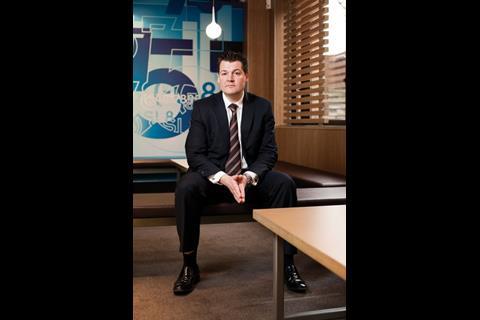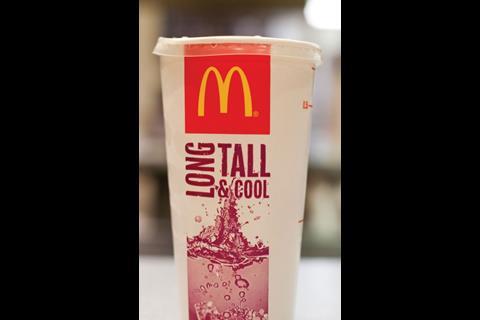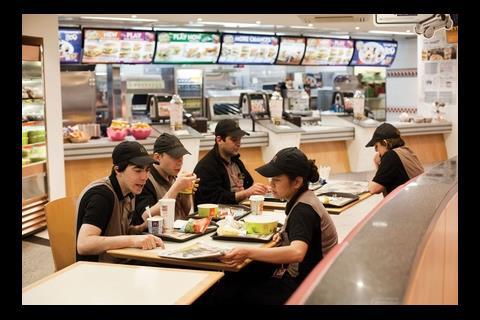Companies eager to expand in these famished times wonât be able to resist McDonaldâsâ supersize diet of drive-thru restaurants and store makeovers. Emily Wright chews the fat with Henry Trickey, the man whoâs serving them up
The smell of burgers sizzling on the grill and the rattle of the famous McDonaldâs frying cages are not conducive to conducting an interview. Itâs harder to take in financials and development pipeline plans when youâve missed breakfast and all you can think about is a quarter pounder with cheese. But for Henry Trickey, the fast food groupâs director of real estate and store development, mixing business with Big Macs is all par for the course. He is the man heading the rebranding of more than 1,000 restaurants across the country, including the staff canteen at McDonaldâs UK headquarters in north London, where he is sat today.
The McDonaldâs brand is known for happy-go-lucky fun, family dining and kiddiesâ party heaven (or hell for anyone over the age of nine). But there is a far tougher ethos for those working behind the scenes, particularly on the construction side.
âQuality of service is paramount,â says Trickey. âThere are organisations we now no longer work with after they failed to deliver the quality of service we require. That can be due to a number of things: inconsistent personalities at site agent level, failure to communicate effectively with the operations team on the ground, failure to follow up on snagging. We expect our supplier to deliver the best quality product and we hold them accountable if they donât.â You get the sneaking suspicion McDonaldâs is a demanding client. Is it? âYes, I would say we are.â
Despite this hard-nosed attitude to store development, the group is one that plenty of construction firms might be interested in working with. McDonaldâs has enjoyed four years of consecutive growth, with sales figures hitting ÂŁ2bn, a record high, last year. Then there is the ÂŁ400m store refurbishment programme, which is due to run up to 2012 (ÂŁ150m of which is still in the pipeline), and a plan to open 20 new drive-thru outlets a year, beginning next year, each with a ÂŁ1m construction value.

Trickeyâs situations
Trickey, 43, has worked for a number of well-known retail and restaurant chains and was responsible for the rolling out of All Bar One bars across the country. He joined Starbucks in 1999 where he was in charge of new store acquisition. Two years later, aged 33, he was promoted to property director where he spearheaded an expansion plan opening 80 to 100 new stores a year for seven years. He joined McDonaldâs in July 2008 as vice-president of development.
âÁè±đ-±đČÔ±đ°ùČ”Ÿ±ČőČčłÙŸ±ŽÇČÔâ
Trickey kicks off by explaining why McDonaldâs is focusing on a rebrand rather than building new stores. He points to the saturation of fast food outlets on the high street, and the fact that there is now at least one McDonaldâs in most UK towns. âWhen it comes to new stores, we are only looking at buying drive-thru locations as there is still an opportunity to expand in this sector. We are doing nothing on high street and very little in shopping centres. Weâll look at Stratford Westfield but not much more. Weâre very well represented on the high street and there is the fact that it has been on the decline for a long time.
âTherefore, we feel the strength in our business lies in our drive-thru portfolio, which comes with an extended timeline of planning, site acquisition and ground up construction. We are looking to open 12 drive-thru outlets this year and 20 a year from 2011 onwards.â
Then, of course, there is the rebranding of the chainâs existing restaurants the groupâs flagship development programme and one that is halfway through a four-year period that will go on up until 2012.
Once it is complete, the work wonât stop. Far from it. Trickey reveals the entire process will start again from the beginning as part of a strategy to make sure that the chain never has any restaurants in dire need of refurbishment. The aim instead is that the groupâs entire portfolio will undergo a rebrand, or âre-energisationâ every four years.
Trickey believes the development plan will significantly boost the groupâs profit and sales figures. He refers to the results posted over the past four years to back up his point: âWe hit the ÂŁ2bn sales mark last year which is a record for the UK business, but also had two years of double-digit, like-for-like sales growth before that,â he says. âInterestingly, we did not acquire any new stores during that time so this has all come through existing stores. It is evidence that the re-image programme has fuelled our sales growth and generated 130 million extra customers over the past two years.â
So what exactly have the changes been? For anyone who has not frequented a McDonaldâs restaurant in the past four years, the garish red and yellow colour scheme is being replaced by green and white. Also on its way out is an âoutside inâ timber and stone theme; new external facades and furniture fittings are being brought in.
But is the sales peak really the result of banishing Ronald McDonald and getting rid of a few arches here and there, or has the increased demand for cheap food been the main driver? âThe growth has not just been over the past 18 months,â argues Trickey. âIt has been solid for four years and for the first two years of that, we were enjoying an economic boom. Last year the informal eating out sector and quick service food sector both declined, but our market share has grown significantly. We are bucking the trend.â
The supply chain
Trickey attributes the success of the build programme to his running of the supply chain â one of the first things he addressed when he joined the group in July 2008. The first step was a purge. âWe asked âwhat can you do for us?â Not, âwhat can we give you?â The approach we have taken is that we have agreed a schedule of rates with eight main contractors based on work volumes. With our component suppliers we retendered everything. We literally worked out the cost from every single supplier for every single component and we bought the cheapest component, so long as it meets the quality requirements.â
The group has increased the number of QS firms it works with from two to five in the past year, and has taken on a new design practice. Trickey adds that the list of main contractors on the supply chain is open to change. âWe bring in new blood as and when required and we review the supply chain regularly. Plus, there is the possibility that as work picks up on the other side of the recession, our main contractors will be winning contracts elsewhere and weâll need to bring new firms on board.â
Winning the work
Trickey is clear about what he is looking for from suppliers. As well as the qualities laid out at the start of the interview, members also have to work efficiently in a restaurant open to the public, with minimal disruption, and be committed to providing a ferociously competitive mixture of best value for money and high quality. âYes, we are a demanding client,â he repeats. âBut in this day and age, everyone has to be.â He adds that McDonaldâs is up against a number of rival brands, not restricted to other burger chains: âApart from Burger King and KFC, there is Subway, the coffee chains like Starbucks, Costa Coffee and CaffĂš Nero, and all the pizza places. We are not the only group in the sector and we need to make sure weâre always one step ahead. We canât be complacent.â
Aware of the competition? Yes. Worried? No. Trickey points again to that growing market share saying that the mixture of a new look and a new menu keeps the chain on top. Talking of the new menu, he admits that his own personal favourite is an old classic. âI do like a Big Mac,â he says. âIf I am really hungry a Big Tasty.â Apparently the Big Tasty is even mightier than the Big Mac â more than 800 calories of beef, cheese and bacon, bread and sour cream sauce. But, of course, with an appetite as voracious as McDonaldâs, thatâs just a snack.
Hamburger University â bite-size learning
McDonaldâs Finchley headquarters doesnât just consist of offices. It is also home to one of eight Hamburger Universities in the world. The other seven are in Chicago, Sydney, Munich, Tokyo, Hong Kong and Brazil. The newest one, which opened this year, is in Shanghai.
The branch in Finchley opened just a year ago and already more than 200 managers have graduated, including students from Ireland, Holland, Switzerland and Brussels.
By the end of 2007 Hamburger University had held courses for an estimated 31,000 students.
Each year about 17,000 students complete formal training at the London college.































No comments yet